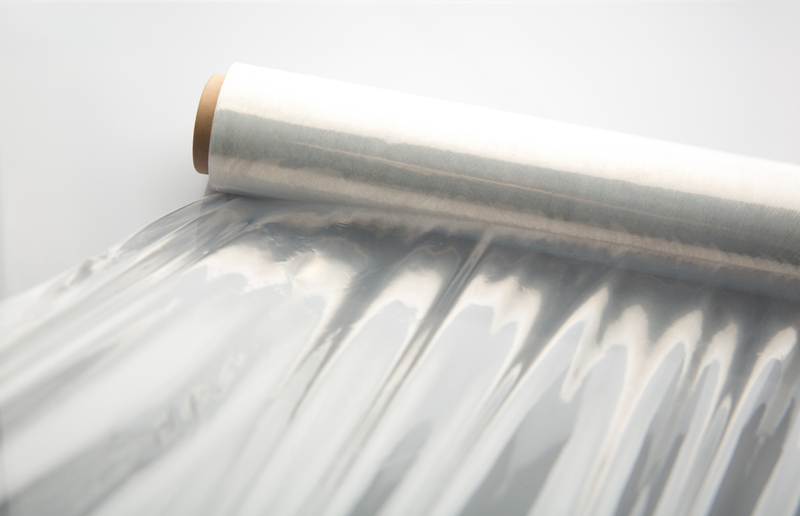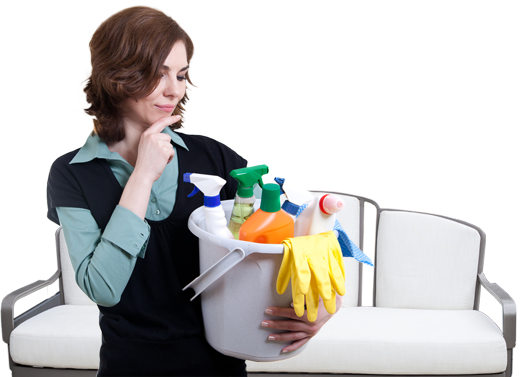Grease Elimination: Your Simple Guide to Clean Enamel Oven Trays
Posted on 09/09/2025
Grease Elimination: Your Simple Guide to Clean Enamel Oven Trays
Grease buildup on enamel oven trays is a hassle every home cook faces. Not only does it make your trays look unsightly, but it can also affect the flavor of your meals, contribute to smoke in the oven, and even shorten the life of your kitchen equipment. But don't worry--keeping your enamel oven trays sparkling clean doesn't have to be a complicated task. In this comprehensive guide, we'll explore easy, effective, and eco-friendly ways for grease elimination from your beloved enamel oven trays. Say goodbye to stubborn grime and hello to effortless cooking!

Why Regular Enamel Oven Tray Cleaning Matters
When it comes to maintaining your kitchen, cleaning enamel oven trays often gets overlooked. However, understanding the importance of removing grease from enamel oven trays can save you time, money, and frustration. Here's why:
- Improved Food Safety: Grease buildup can harbor bacteria, leading to potential food contamination.
- Better Tasting Meals: Residual oil and grime can taint the flavors of your freshly prepared dishes.
- Longer Tray Lifespan: Proper cleaning prevents corrosion and staining, preserving the integrity of the enamel coating.
- Reduced Fire Hazard: Built-up grease is a fire risk, especially at high oven temperatures.
Key Features of Enamel Oven Trays and Why They Need Special Care
Enamel oven trays are favored in many kitchens for their durability, non-stick properties, and ease of cleaning. The smooth, glass-like enamel coating is resistant to rust and scratches, but prolonged exposure to harsh chemicals or abrasive tools can damage it. That's why gentle, yet effective, grease removal for enamel oven trays is crucial.
Common Mistakes People Make in Cleaning Enamel Oven Trays
Before delving into tried-and-true methods, it's important to recognize some common pitfalls:
- Using abrasive pads: Steel wool or rough sponges can scratch enamel, making trays prone to permanent staining and rust.
- Soaking for too long: Extended soaking can weaken the enamel layer, especially if paired with harsh chemicals.
- Using bleach or heavy-duty oven cleaners: These can degrade enamel and pose health risks if not fully rinsed off.
- High-temperature cleaning methods: Self-cleaning cycles may warp trays or fade enamel coating.
So, what should you do instead? Let's explore the best solutions for effective grease removal from enamel oven trays without causing unnecessary damage.
Step-by-Step Guide: How to Clean Grease Off Enamel Oven Trays
The Gentle Everyday Method
This straightforward technique is perfect for routine cleaning after everyday use.
- Let the tray cool: Allow your enamel tray to reach room temperature to avoid cracking from rapid temperature changes.
- Wipe off excess grease: Use a paper towel or soft cloth to remove surface grease before washing.
- Soak in warm, soapy water: Fill your sink or a large basin with warm water and a mild dish soap. Let the tray soak for 10-20 minutes.
- Scrub gently: Using a non-abrasive sponge or cloth, gently scrub the surface, focusing on greasy or stuck-on spots.
- Rinse and dry: Rinse thoroughly under warm water to remove any soap residue. Dry immediately with a soft towel to prevent water spots.
Eco-Friendly Deep Cleaning for Stubborn Grease
Sometimes, regular washing isn't enough for tough, baked-on grease. Try this natural method using simple household ingredients:
- Make a baking soda paste: Mix baking soda and water to form a thick paste. You can also add a few drops of mild dish soap for extra cleaning power.
- Apply the paste: Spread the mixture over the greasy areas of your enamel tray. Let it sit for 30 minutes to an hour. For tougher stains, leaving the paste overnight is safe and more effective.
- Gently scrub: Use a soft sponge or microfiber cloth to scrub the surface. The baking soda will break down the grease without scratching the enamel.
- Rinse thoroughly: Remove all residue with warm water, ensuring no paste remains on the tray.
- Dry immediately: Prevent water spots by wiping the tray dry with a clean towel.
Quick Tip: For a fresh scent and antibacterial effect, add a few drops of lemon juice or white vinegar to your cleaning solution.
Best Commercial Products for Grease Elimination on Enamel Oven Trays
If DIY methods don't fully deliver, there are several gentle, enamel-safe cleaners available:
- Enzyme-based degreasers: Highly effective at breaking down organic residues without harming enamel.
- Mild dishwashing powders: Designed for sensitive cookware and gentle on surfaces.
- Non-abrasive oven cleaners: Look for those specifically labeled safe for enamel. Always follow manufacturer instructions.
Remember to avoid harsh chemical cleaners and always test a small patch before applying widely to prevent unexpected damage.
How Often Should You Clean Your Enamel Oven Trays?
Maintaining clean enamel oven trays is simpler when you establish a regular routine:
- After every use: Remove loose food debris and wipe away surface grease.
- Weekly: Perform a gentle wash with mild detergent, especially if cooking high-fat foods.
- Monthly or as needed: Deep clean with baking soda or a specialized cleaner for stubborn stains or caked-on grease.
Preventative Maintenance for Long-Lasting, Grease-Free Enamel Oven Trays
- Line trays with parchment paper or silicone baking mats: Reduces direct contact with greasy foods, making post-cooking cleanup easier.
- Address spills immediately: Quick action before grease bakes on saves hours of scrubbing.
- Avoid high-heat broiling if unnecessary: Intense heat can bond grease to the enamel surface.
- Inspect trays regularly: Look for chips or cracks in enamel. Damaged trays should be replaced to prevent rust.
Frequently Asked Questions About Grease Removal from Enamel Trays
Can I put enamel oven trays in the dishwasher?
Most enamel oven trays are technically dishwasher safe, but over time, harsh detergents and high temperatures can dull the shine and weaken the enamel. For best results and longevity, hand washing is recommended for effective grease elimination.
Are oven self-cleaning cycles safe for enamel trays?
Generally, it's best to avoid self-cleaning cycles for enamel trays. The extreme heat can warp metal and cause enamel to chip or discolor.
What if my tray has burnt-on black residue?
Stubborn burnt-on residues can often be removed with an overnight baking soda paste or by soaking the tray in a mixture of hot water and vinegar. Repeat gentle scrubbing as needed but never use steel wool or metal scrapers.
Can I use ammonia or bleach on enamel trays?
No, both ammonia and bleach are too harsh and can break down enamel, leading to discoloration and potential health risks due to chemical residue.
Eco-Friendly and Safe Solutions for Grease Elimination
As more households seek green alternatives, natural grease elimination for enamel oven trays is gaining popularity. Here are a few effective solutions:
- Baking Soda and White Vinegar: Excellent for tough grease and safe for periodic deep cleaning.
- Lemon Juice: Naturally cuts through grease and leaves your trays smelling fresh.
- Cornstarch Paste: Mixed with water, cornstarch lifts oil and can help with caked-on food.
- Hydrogen Peroxide: When mixed with baking soda, this offers increased cleaning power while being safe for enamel when used occasionally.
Pro Tip: Always rinse thoroughly to ensure no residue is left behind!
What to Avoid When Cleaning Enamel Oven Trays
Ensuring the longevity of your enamel oven trays depends not only on how you clean but also what you avoid:
- No metal scouring pads: Even a single scratch can lead to bigger problems later on.
- Avoid harsh chemicals: Acidic or bleach-based cleaners can etch and weaken enamel.
- Stay away from prolonged soaking: Long exposure to water can seep into cracks, causing rust on the underlying metal.
- Don't ignore manufacturer instructions: Always check the user manual for tray-specific tips and cautions.

Final Thoughts: Effortless Grease Elimination for Enamel Oven Trays
With the right routine, effective products, and a gentle touch, you no longer need to dread post-cooking messes. By following the tips and strategies in this guide, grease elimination from enamel oven trays becomes a straightforward task--protecting your investment, enhancing your food flavor, and keeping your kitchen safe. A clean tray means more enjoyable meals and less cleaning stress. Get started with these easy methods today, and keep your enamel trays looking and performing their best!
Summary: Key Takeaways for Cleaning Enamel Oven Trays
- Clean your trays after every use for best results.
- Use gentle, natural cleaning methods--baking soda is your best friend.
- Avoid abrasives and harsh chemicals to protect the enamel coating.
- Set a regular deep-cleaning schedule to tackle tough stains and grease.
- Practice preventative care with parchment liners and quick spill clean-ups.
By embracing these essential grease elimination methods, your enamel oven trays will remain spotless--and your kitchen adventures will be that much more enjoyable. Clean trays, better food, happier home!





